The meetings between Germany and the Netherlands on the football pitch have always been exciting. Yet again, we witnessed another great show by the two teams as the Oranje took on the 2014 World Cup winners after an interesting twist in their performance in the Euro 2020 qualifiers.
As the scoreline shows, Germany dominated the first half, although they lacked good finishing, which deprived them of a greater advantage at half-time. The Netherlands’ continuous efforts, and a change in their plan, were rewarded by them equalising and taking control of the game to finish as the winners with a 4-2 scoreline.
Games between these two teams are often the opposite of what you would expect. This time Joachim Löw’s tactics forced Ronald Koeman to change his team’s strategy in-game, and it worked out perfectly for them.
In this tactical analysis, we will take an in-depth look at both teams’ tactics. We’ll use analysis to see what went wrong for Germany and how Koeman found a solution to the intense pressure.
Lineups
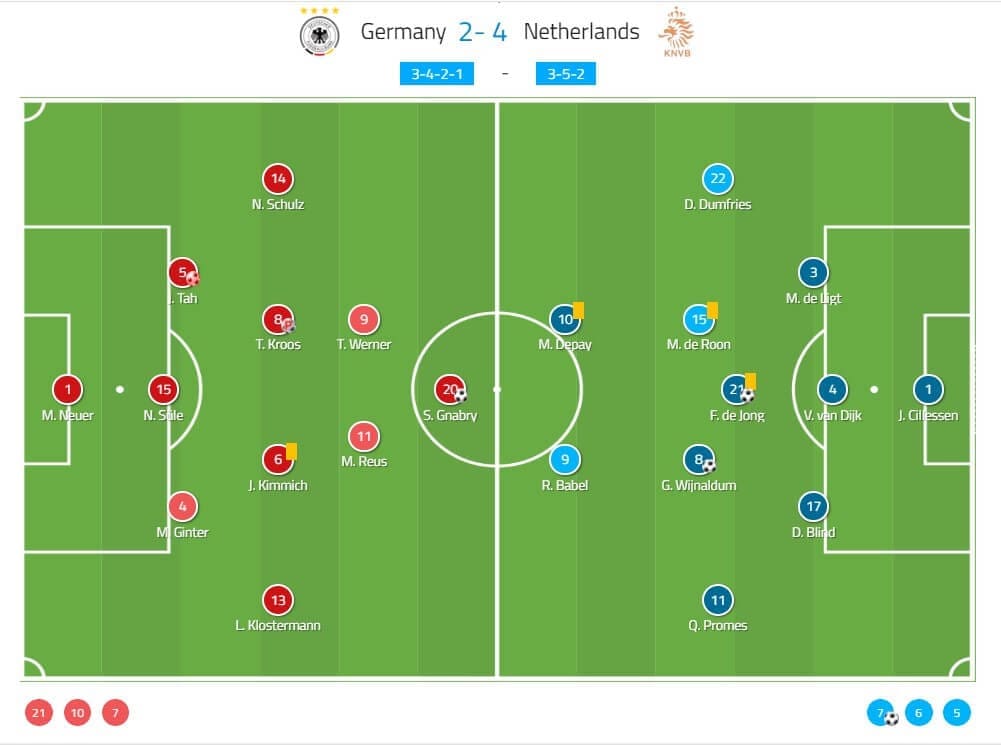
Löw lined up Germany in a 3-4-2-1 formation in possession with an intention to fit their opponents’ strategy. Manuel Neuer was his first choice for the goalkeeping spot once again. In the defensive third, the coach relied on Jonathan Tah, Niklas Süle and Matthias Ginter. Nico Schulz and Lukas Klostermann were in the role of wing-backs, with Schulz supporting the attacking actions, whilst Klostermann would focus on his defensive responsibilities. In the heart of the team, Toni Kroos and Joshua Kimmich formed a dangerous duo, being responsible for distributing the ball further. The forward line, which caused a lot of trouble to one of the best defenders in the world right now was formed by Timo Werner, Marco Reus and Serge Gnabry.
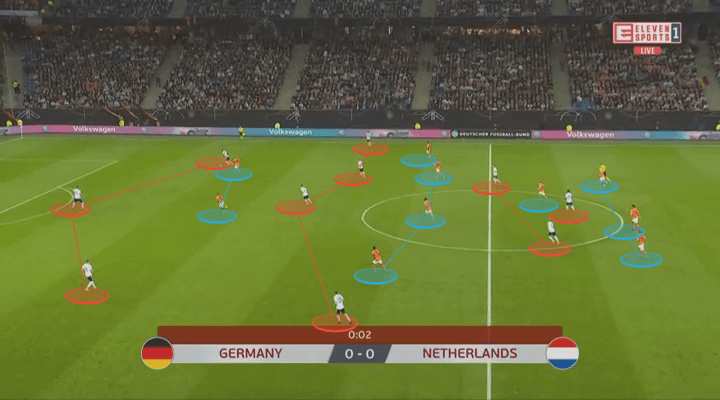
Koeman used some varieties of the 3-5-2 scheme, going from 3-1-4-2 to 3-4-1-2 in different phases of the game. On the goal, he had Jasper Cillessen, right behind the defensive trio of Daley Blind, Virgil van Dijk and Matthijs de Ligt. Unexpectedly, the underrated Blind pulled out a strong performance and managed to keep his side safe as well as help in their forward actions. Frenkie de Jong was acting as a pivot in the defensive midfield, having Quincy Promes and Denzel Dumfries on the wings. What was more interesting is that they didn’t have much of a wing-backs role, which is typical when the teams are defending with a back three. In the centre of the pitch were operating Marten de Roon and Georginio Wijnaldum, who would turn as one of the best performers in the second half. To finish off their attack, Koeman chose Memphis Depay and Ryan Babel.
Germany’s efforts
The Mannschaft were patiently waiting for their chances. They were trying to drag the whole play into certain areas then wait for the perfect moment to break through. The team weren’t pressing as intensively as we are used to seeing them. They relied more on the midfielders’ positioning, who would try to block all the passing lanes to stop their opponents’ build-up from the back.
The players would also use their off the ball movement to drag their markers out of position and try to exploit the spaces thus opened up. This happened for Germany’s opener. Due to the man-marking applied by his team, Blind was dragged out of position by Gnabry, which opened a gap in the Oranje’s five-man defence. Once Klostermann received a long through ball from Kimmich, the Netherlands’ defence was already unable to outrun him.
Actually, Kimmich was the one responsible for a lot of the team’s forward passes, finishing the match with 96% pass accuracy and 100% accuracy of his passes into the final third.
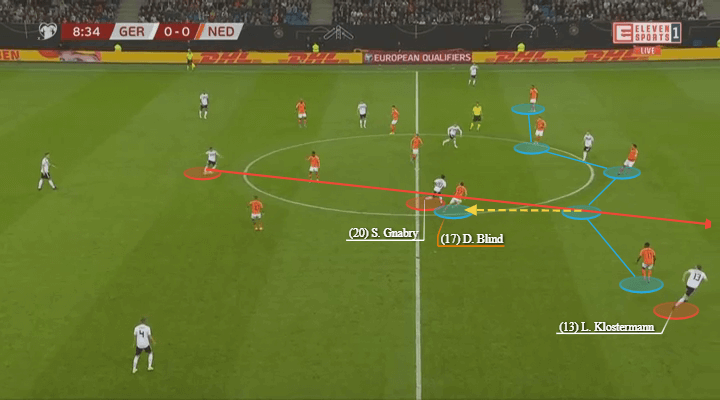
The Netherlands were relying on having a numerical advantage when defending, but Germany’s wing-backs would join the attacking trio and create five vs five situations. As already mentioned Promes and Dumfries weren’t the typical wing-backs, and it showed when they had to act as defensive support. Promes was unable to cover his man properly.
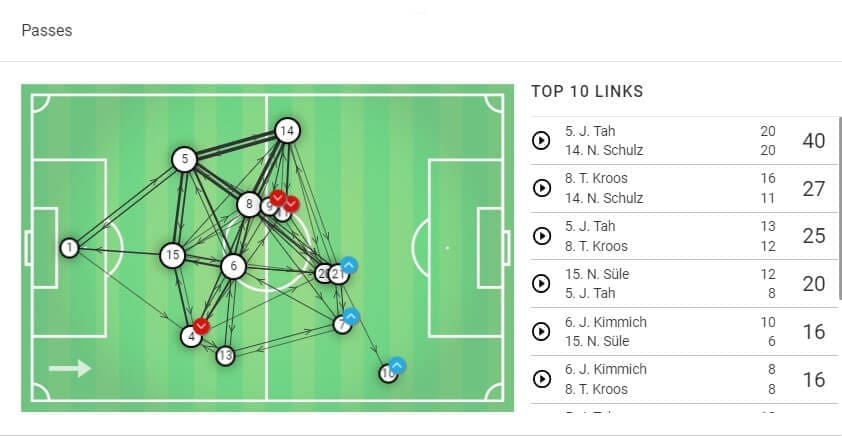
The Netherlands would try to limit the space between the lines, but Germany would go for a long ball/through ball and use their pacey attackers to create chances. They were mostly trying to build-up on the left using Tah, Schulz and Kroos. They would perform short pass combinations in order to proceed the ball further without having to hold on to it too much, minimizing the risk of being pressured and losing the ball in their defensive third.
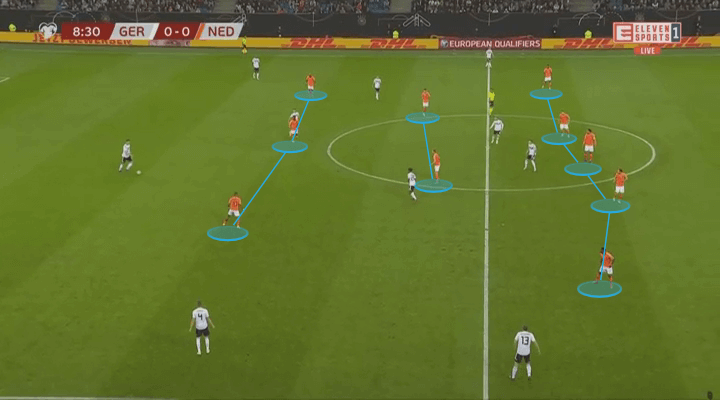
When the Netherlands were in possession, trying to build-up, they struggled as they couldn’t send the ball to the half-spaces where De Roon and Wijnaldum would be positioned. They would move off the ball and switch positions in order to create more opportunities but without success. That forced Depay to frequently drop back and try to open spaces, breaking Germany’s defensive structure, but his actions on the ball weren’t successful enough.
Their movement was risky at times as they gave Germany the opportunity to counter-attack and use the change in the structure smartly. The lack of good finishing, though, stopped DFB from doubling their advantage.
The Netherlands’ response
The Netherlands’ only successful actions were created through their left flank. Although they were often pinned back and forced to pass the ball between the centre-defenders, the times that they managed to build-up properly would invariably be by using Blind, De Jong and Promes.
The low efficiency of the actions on the right forced Koeman to a double chance in the 58th minutes. He subbed De Roon and Dumfries hoping that debutant Donyell Malen and Davy Pröpper could bring more creativity to their attacking actions.
These substitutions changed the whole dynamic of the game. They contributed to some player rotations that seem to be enough to apply pressure to their opponents and force them into individual mistakes. De Jong’s playmaking abilities are crucial for the team’s performance, but since his positioning wasn’t allowing him to completely commit to creating opportunities, Koeman decided to bring him further up the pitch. Having Pröpper’s support and switching to a 3-4-2-1 formation brought completely different results. The Netherlands immediately moved their play forward and were positioned deeper into Germany’s half. A minute after the changes the Barcelona player equalised.
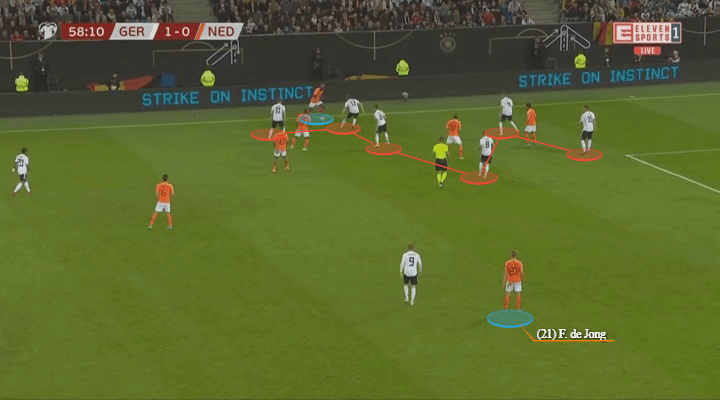
This forced Löw into a double change, looking to bring their possession-oriented playmaking style and try to dictate the tempo, especially in the midfield area. He brought in İlkay Gündoğan and Kai Havertz for Reus and Werner. They immediately tried to apply more pressure but the Oranje players’ ball control didn’t allow them to create any significant chances as they would successfully take on their markers and proceed the ball further.
Going into the final stages of the game, both teams focused on more attack-minded approaches creating chance after chance. Increasing the pace resulted in leaving more open spaces which both teams didn’t hesitate to exploit. Werner’s absence became noticeable as his pace would have been very helpful end-to-end.
The Netherlands’ creativity increased significantly after the changes and it resulted in two late goals. Their high press worked well enough to decrease the opposition’s pass accuracy. This was the reason for the great one-touch combination that gave Malen a chance to score on his debut.
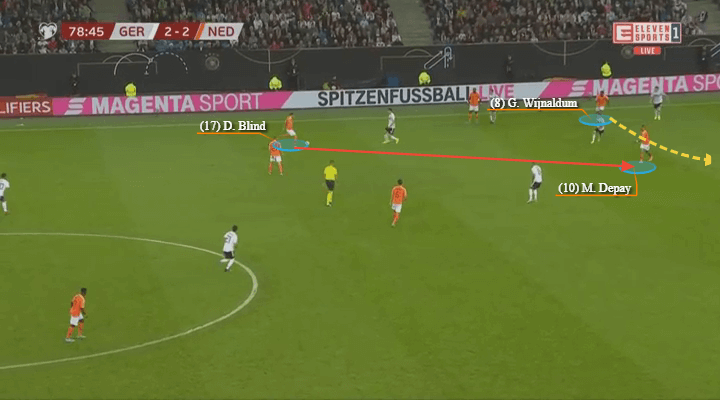
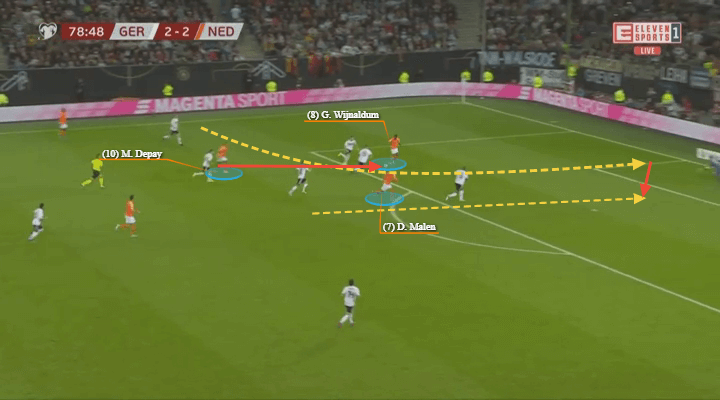
Blind sent the ball to Depay who was drifting back again. He then sent the ball to Wijnaldum who finished off in perfect sync with Malen’s off-the-ball movement. The 20-year-old entered the box in a perfectly timed manner.
In the additional time, another great combination by the best performers Depay and Wijnaldum ended in the Netherlands scoring for the final 4-2.
Conclusion
The Netherlands are gaining back their strength and are a dangerous team to play against. Their vulnerability hides in overcommitting into finding a solution to their attacking struggles. Trying out difference movements sometimes breaks their structure which allows their opponents to create opportunities. Germany could have won the game if they had taken advantage of their chances. Their opponent didn’t seem to stop trying and it ended up with Die Mannschaft struggling to play under pressure. The former world champions need to work on their consistency and in-game changes if they want to be the same force as before.

If you love tactical analysis, then you’ll love the digital magazines from totalfootballanalysis.com – a guaranteed 100+ pages of pure tactical analysis covering topics from the Premier League, Serie A, La Liga, Bundesliga and many, many more. Buy your copy of the August issue for just ₤4.99 here.

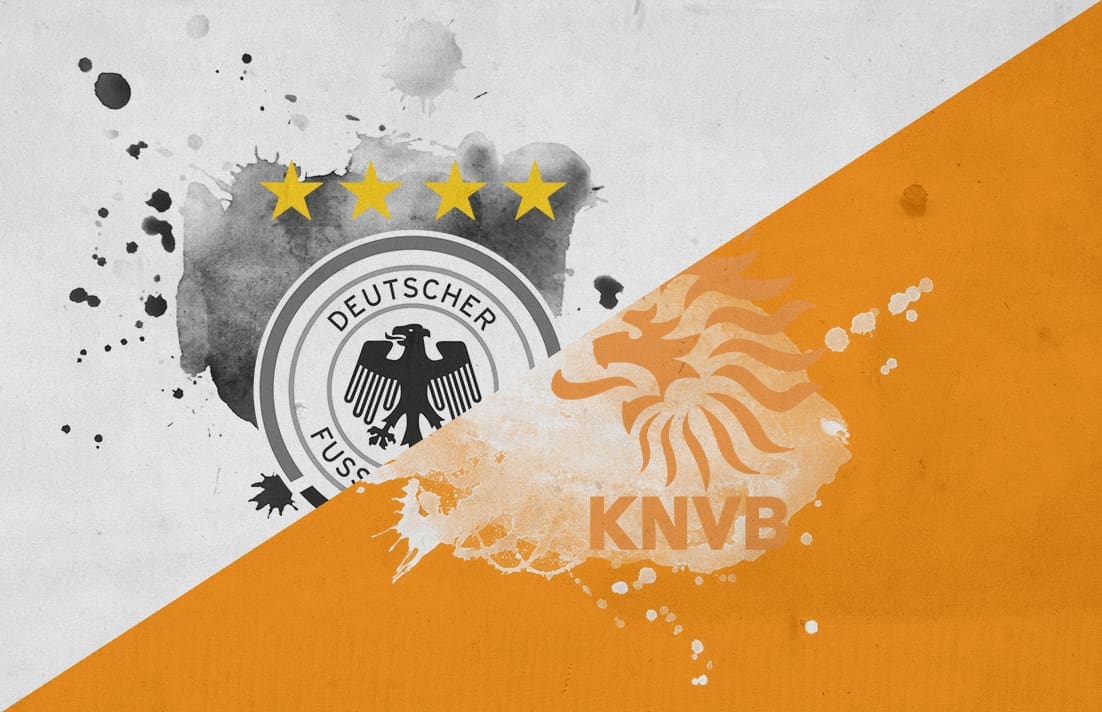



Comments